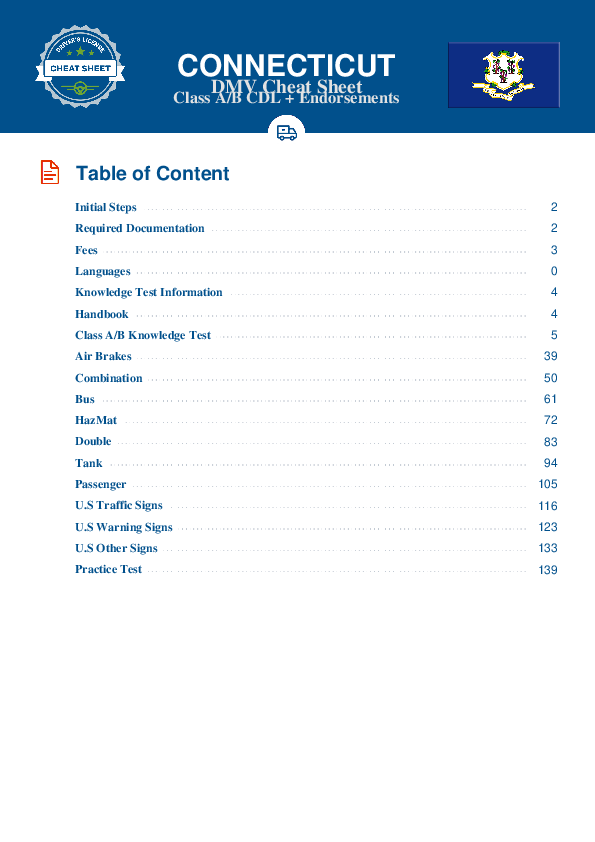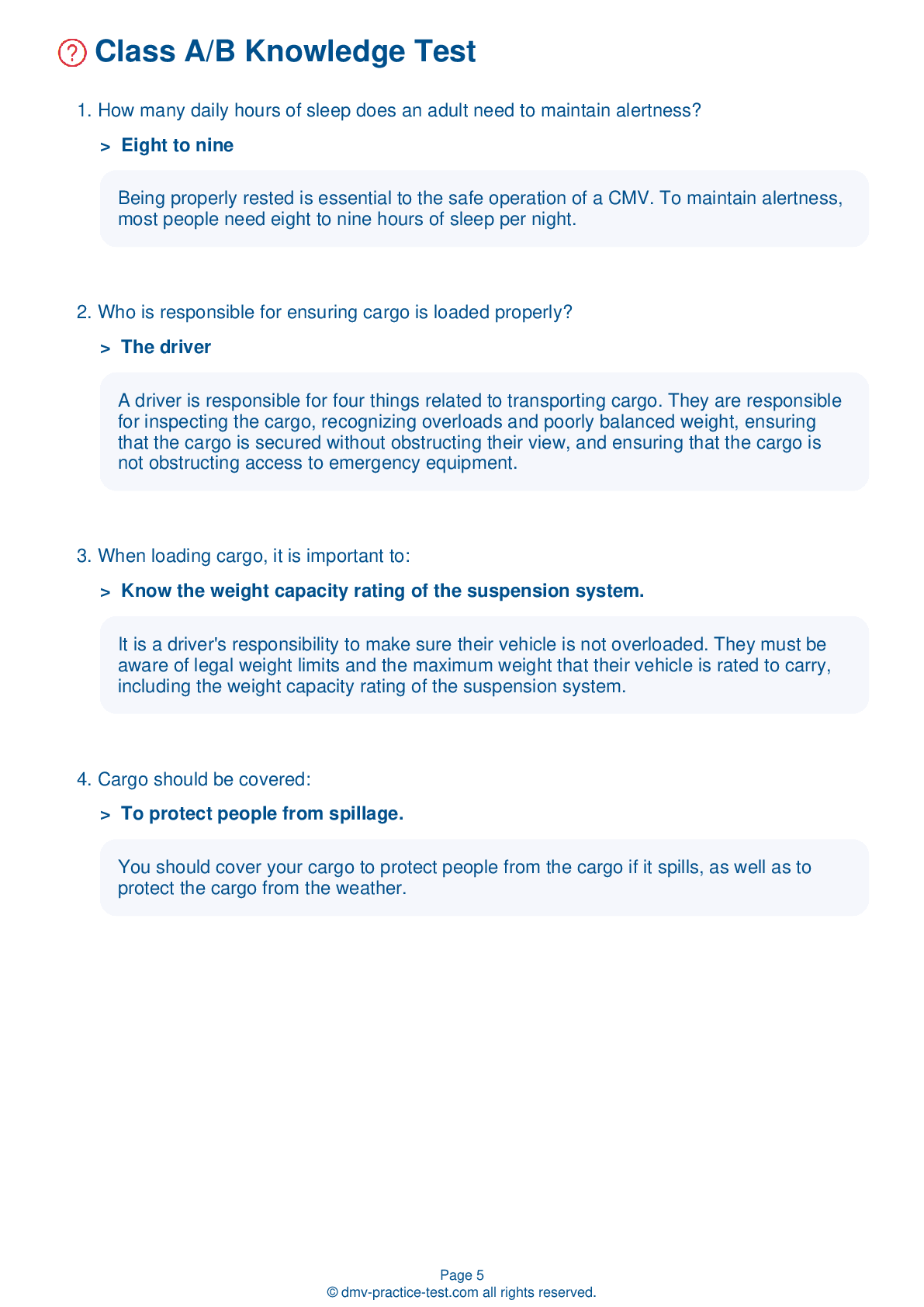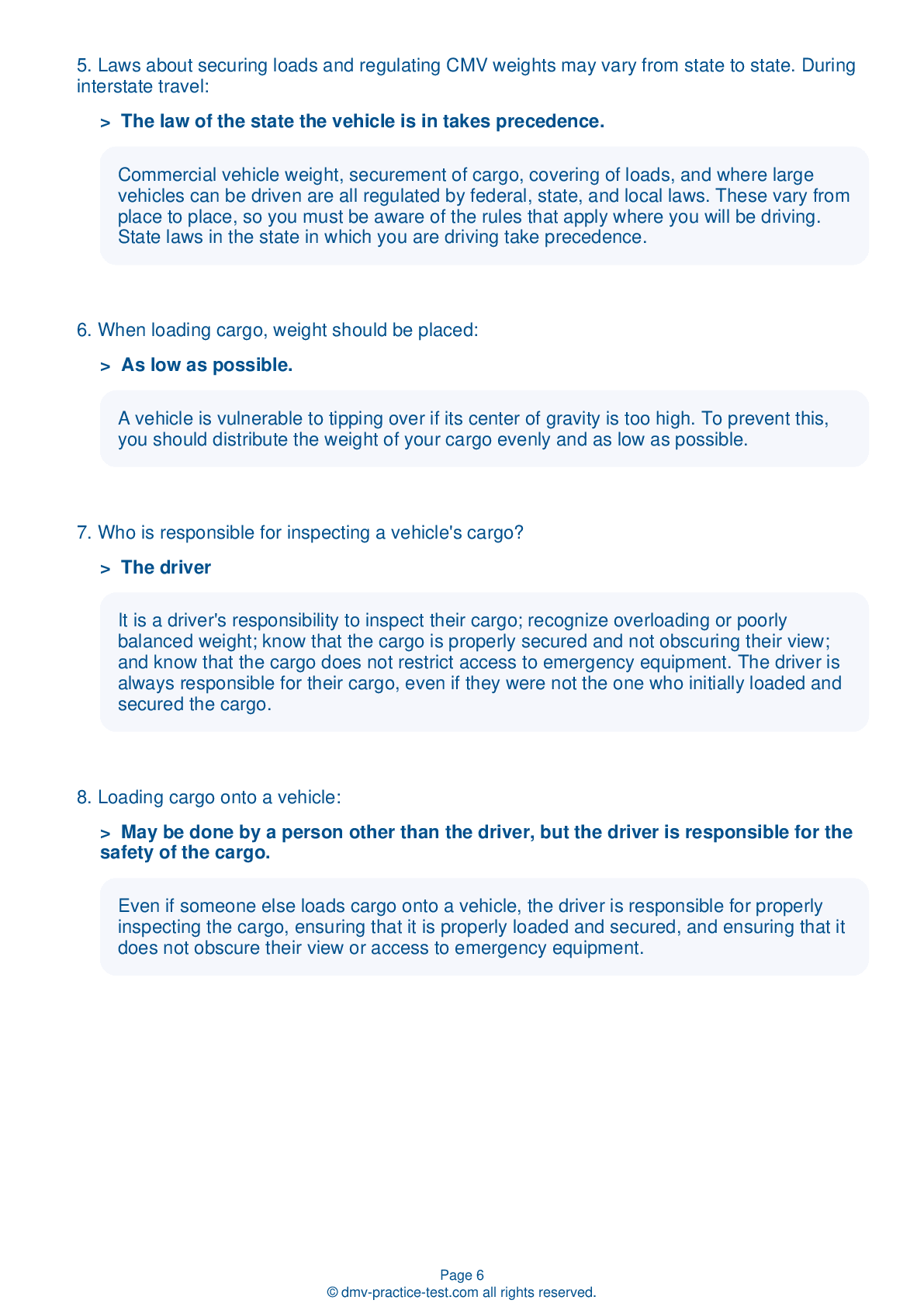Class A Driving Test | Connecticut 2025 #1 Page 7 of 7
Train for FREE online with our Connecticut class A license test. The official exam test consists of several obligatory parts, with all of them checking your knowledge of different blocks of road rules. If you need to obtain a CT CDL class A permit in 2025, practice as much as possible. Free sample tests published on our website will help you check and improve your knowledge and boost your grades. Please bear in mind that CDL class A requirements may vary from state to state.
43 . A low air pressure warning signal:
Any vehicle with air brakes must be equipped with a low air pressure warning signal.
44 . When driving through a work zone, you should:
In work zones, you should observe posted speed limits. Slow down if road or weather conditions are poor, and slow down even further if workers are near the roadway.
45 . A burning tire should be:
A burning tire should be cooled with water. A driver may need to use large quantities of water to properly cool the tire.
46 . Hydroplaning occurs when:
Hydroplaning is an effect that occurs on wet roads when tires lose traction with the road surface and begin gliding along on a layer of water.
47 . Which of the following determines your blood alcohol concentration (BAC)?
The three main factors that determine a person's blood alcohol concentration (BAC) are how much alcohol was consumed; how fast it was consumed; and the person's body weight. The only thing that can lower a person's BAC is waiting for the alcohol to leave their system naturally.
48 . You may be able to identify a distracted driver by if they are:
You may be able to tell that another driver is distracted if you can see them drifting within a lane or across lane dividers; traveling at inconsistent speeds; being preoccupied with a cell phone, a map, food, or other items; or engaging in conversation with passengers.
49 . When traveling down a long downgrade, you should brake by:
On a downgrade, you should use the braking effect of your engine as the principal way of controlling your speed. Save your brakes for additional slowing or stopping that may be required by road or traffic conditions.
50 . If a vehicle's Anti-Lock Braking System (ABS) is malfunctioning:
An Anti-Lock Braking System (ABS) intervenes to reduce brake pressure if there is a risk of wheel lockup. If the ABS isn't working, the vehicle's basic braking functions are not affected. A driver should continue to drive and brake in a normal manner.
See the exact questions that will be on the 2025 Connecticut DMV exam.
99.2% of people who use the cheat sheet pass the FIRST TIME
Lillian MCcranie explains how our CDL study guide was helpful in passing the exam and recommends it to everyone.
Cameron tells us how he purchased the CDL exam, and found it to be a useful tool which helped him pass the exam and find a job.



